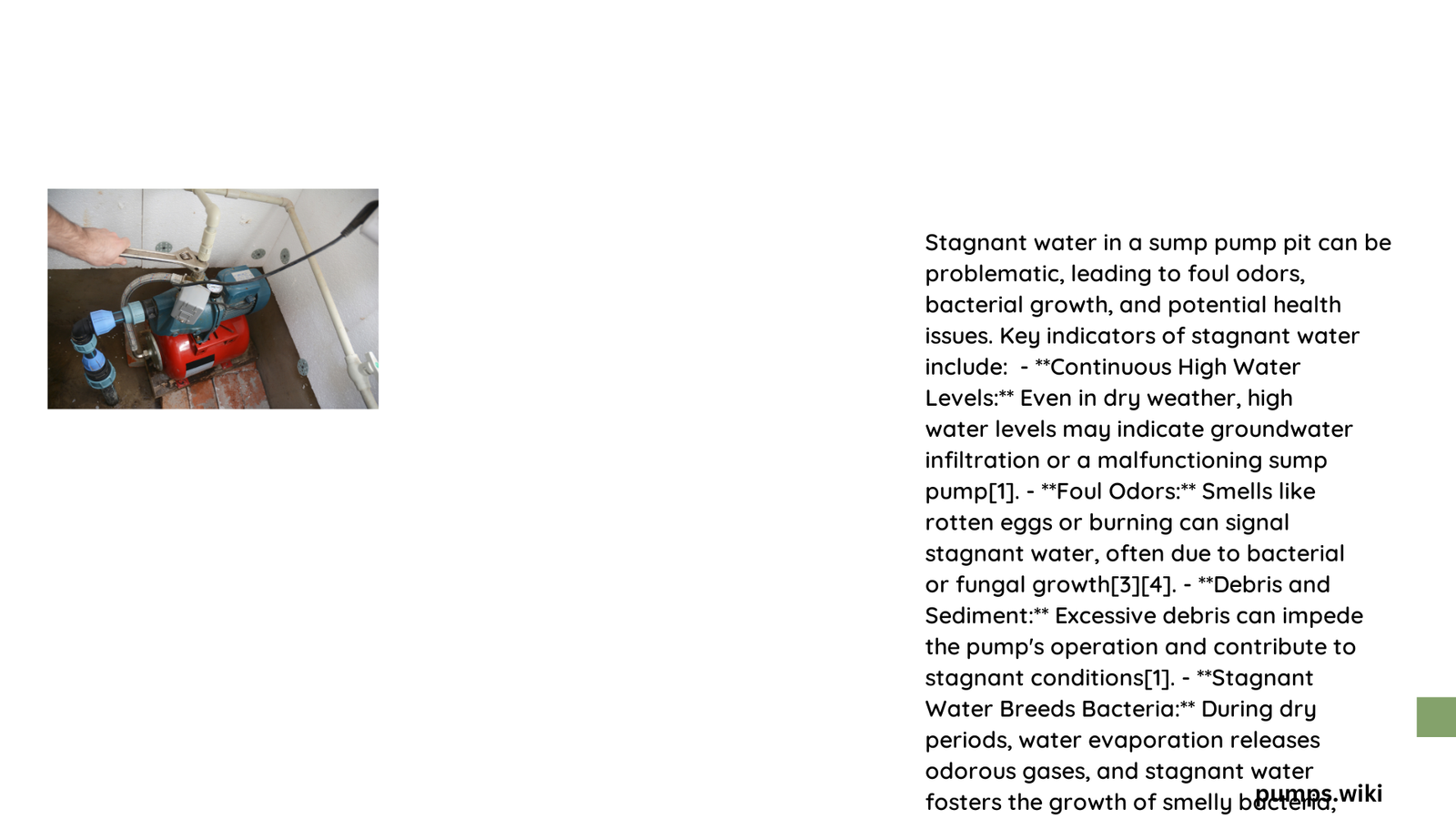Stagnant water in a sump pump can signal serious underlying issues that compromise your basement’s drainage system. When water remains motionless in the sump pit, it indicates potential pump malfunction, drainage problems, or installation errors that require immediate attention to prevent moisture-related damage, mold growth, and potential structural complications in your home’s foundation.
What Causes Stagnant Water in Sump Pump?
Why Does Pump Performance Decline?
Sump pump performance can deteriorate due to multiple interconnected factors:
- Mechanical Failures
- Faulty float switch
- Blocked intake screens
-
Worn motor components
-
Installation Complications
- Incorrect pit positioning
- Improper discharge pipe slope
- Inadequate drainage design
| Issue Type | Potential Consequences | Recommended Action |
|---|---|---|
| Mechanical Failure | Reduced pumping efficiency | Professional inspection |
| Installation Error | Water accumulation | System recalibration |
| Drainage Problems | Persistent moisture | Comprehensive drainage audit |
How Do Drainage Systems Impact Stagnant Water?
Drainage systems play a crucial role in managing water flow. Compromised perimeter drains can lead to:
- Blocked water pathways
- Increased hydrostatic pressure
- Potential foundation stress
What Are the Risks of Unaddressed Stagnant Water?
Unresolved stagnant water presents significant risks:
- Structural Damage
- Concrete deterioration
- Foundation weakening
-
Potential basement flooding
-
Health Hazards
- Mold proliferation
- Bacterial growth
- Increased allergen levels
How to Diagnose Sump Pump Water Stagnation?
Diagnostic Checklist:
– Inspect float switch movement
– Check discharge pipe for blockages
– Measure water accumulation rate
– Evaluate pump activation frequency
What Cleaning Techniques Resolve Stagnant Water?
Comprehensive Cleaning Process
- Preparation
- Disconnect power
- Wear protective gear
-
Gather cleaning supplies
-
Cleaning Steps
- Remove debris
- Use bleach solution (1 cup per gallon)
- Scrub pit walls
-
Flush with clean water
-
Post-Cleaning Verification
- Test pump functionality
- Monitor water drainage
- Confirm proper operation
When Should Professional Help Be Sought?
Consider professional intervention if:
– Persistent water accumulation occurs
– Complex drainage issues exist
– Significant structural concerns are detected
Expert Maintenance Recommendations

Preventive Maintenance Schedule
- Quarterly Checks
- Test pump functionality
- Inspect drainage systems
-
Clean sump pit
-
Annual Comprehensive Review
- Professional system evaluation
- Detailed component inspection
- Potential system upgrades
Conclusion
Addressing stagnant water in sump pump systems requires proactive management, regular maintenance, and a comprehensive understanding of drainage dynamics. Homeowners can mitigate risks by implementing systematic inspection and prompt intervention strategies.
Pro Tips
- Never ignore standing water
- Invest in quality drainage solutions
- Prioritize preventive maintenance
Cost Considerations
- DIY maintenance: $50-$200 annually
- Professional inspection: $200-$500
- Major system repairs: $1,000-$5,000
Technical Insights
- Average sump pump lifespan: 7-10 years
- Recommended water removal rate: 1,000-2,000 gallons per hour
